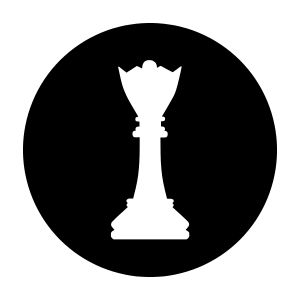
Mastering Chess Tactics: Unveiling the Power of the Pin
Chess is a game of strategy and tactics. There are numerous tactics in chess that players can use to gain an advantage over their opponents. One of the most effective tactics is the pin. In this article, we will explore what a pin is, how it works, and some examples of pins in action.
What is a pin?
In chess, a pin is a tactic that involves attacking a piece that is protecting another piece. The attacking piece pins the defending piece to its king, preventing it from moving without exposing the king to attack. The pinned piece is said to be “pinned” to the king, and it becomes a very valuable target for the attacking player.
How does a pin work?
When a piece is pinned, it cannot move without exposing the king to attack. This means that the defending player must either move the king or move the pinned piece, which may result in the loss of material or even checkmate. The attacking player can use the pinned piece as a target for further attacks or to create other tactical opportunities on the board.
Examples of pins:
- The Bishop Pin
One of the most common types of pin is the bishop pin. In this pin, a bishop attacks a piece that is protecting another piece. The attacking bishop pins the defending piece to its king, and the defending player cannot move the pinned piece without exposing the king to attack.
Here is an example of a bishop pin in action:
[White “White”] [Black “Black”] [FEN “r3k2r/ppp1qpb1/2np1np1/8/2BPP3/2N2N2/PP2QPPP/R1B1K2R w KQkq – 0 1”]
- Bxf6 Nxf6 2. Qd8+ Qxd8 3. Rxd8+ Ne8 4. Rxe8#
In this position, White has just played Bxf6, pinning Black’s knight to the king. Black cannot move the knight without exposing the king to checkmate. Black resigns after White’s next move, as there is no way to prevent the checkmate.
- The Rook Pin
Another common type of pin is the rook pin. In this pin, a rook attacks a piece that is protecting another piece. The attacking rook pins the defending piece to its king, and the defending player cannot move the pinned piece without exposing the king to attack.
Here is an example of a rook pin in action:
[White “White”] [Black “Black”] [FEN “r4rk1/pp2bppp/2n5/4p3/1q6/1BP5/PP1Q1PPP/R1B2RK1 w – – 0 1”]
- Qd3 Qxd3 2. Bxd3 Bxf3 3. gxf3 Rd8 4. Bc2 Rxd1+ 5. Bxd1 Kf8
In this position, White has just played Qd3, pinning Black’s queen to the king. Black cannot move the queen without exposing the king to attack. Black decides to exchange queens with 1…Qxd3, but after 2. Bxd3, Black’s bishop is pinned to the king. Black must move the bishop, and White gains a small advantage in the endgame.
The pin is a powerful tactic in chess that can be used to gain an advantage over an opponent. Whether it is a bishop pin or a rook pin, the goal is the same: to attack a piece that is protecting another piece and pin it to the king. By understanding how pins work and how to create them, they can prove to be a game-changing move that can lead you to success.




